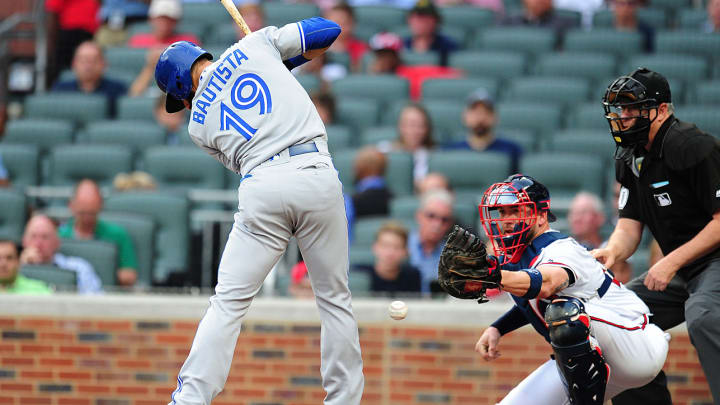The Case For: Banishing Beanballs

In this kinder, gentler age of ours, baseball loves to promote itself as the least bloody major sport: Football mushes the brain; hockey ravages the smile; basketball and soccer shred knees and tendons. All those stars will be lucky to be walking without assistance at 60, whereas, in the national pastime, every player stays young and rich forever.
But while baseball may still be the best place to park a young athlete who (wisely) fears contact, it also, regrettably, stands alone among major sports in tolerating violent assault with a projectile. Baseball may not be that dangerous, but a baseball is.
Roughly two batters are hit every three games, a figure that has held constant for more than 20 years. That presents 1,600-odd separate opportunities for injuries to ribs, hands, heads and any other spot exposed to the pitcher. And those injuries happen often. On May 17, for example, the Braves' Freddie Freeman, who was leading the National League in home runs, took a pitch from the Blue Jays' Aaron Loup off his wrist. He was the seventh Brave to get hit in the series. He'll be out for two months.
Somehow, the remarkable Mike Trout is only getting better as he builds a historic season
Sure, sometimes pitchers miss their mark inside and sometimes batters make like Sheryl Sandberg and lean in, all the better for their on-base percentages. But too often pitchers act with intent. Plausibly intentional plunkings prompt obviously intentional responses, and then everything devolves from there.
For instance, Freeman's drilling prompted an attack, with the first pitch of the next inning, on the left kneecap of the Blue Jays' Devon Travis. Later that night, after a home run, Toronto's José Bautista (above) bat-flipped and stared down Atlanta pitcher Eric O'Flaherty. So the Braves threw at Bautista's legs the first time he stepped to the plate the next day—and after that pitch missed, they hit him with the subsequent one.
In big league beanball culture, a plunking seems the appropriate response to any slight. It's all codified here, in the unwritten rule book: If a hitter admires a home run, drill him! If he takes too long to get to first, drill him! If he looks askance at the pitcher, drill him! And here teams are constantly innovating: Last Friday, Dodgers righty Ross Stripling threw behind Miami's Giancarlo Stanton—causing both benches to clear—because the Marlins had plunked Brett Eibner an inning earlier. Why had Eibner been hit? Without spelling it out entirely, Miami manager Don Mattingly explained postgame that he was mad that L.A. shortstop Corey Seager had swung in a 3-and-0 count with his team up by five. How dare he!
Fame Game: A dozen Cooperstown-bound stars and the most star-studded matchup ever
Baseball fans deserve high drama to carry us through a long regular season. But no one ought to get hurt. What makes the beanball so foul is that the hitter has a small fraction of a second to react—he has no guarantee of defending himself. (The pitcher likes it that way: He appears tough and team-oriented while offering up, functionally, a sucker punch.)
MLB, by contrast, has had years to react to the self-evident toxicity of beanball culture, and it has done little besides short suspensions and brief phases of increased umpire vigilance. The league should do more, starting with a 10-game suspension for any plunking deemed deliberate by the umpires and 15 for anything above the waist. The players' union may initially resist a policy that results in longer suspensions, but ultimately it doesn't want Freeman getting hurt either.
Surely traditionalists will want to preserve the old way of doing business. But things have gotten out of hand. Besides, a punch to the gut from the catcher would probably get the point across just as well. I'm not one for violence, but it's all relative.
